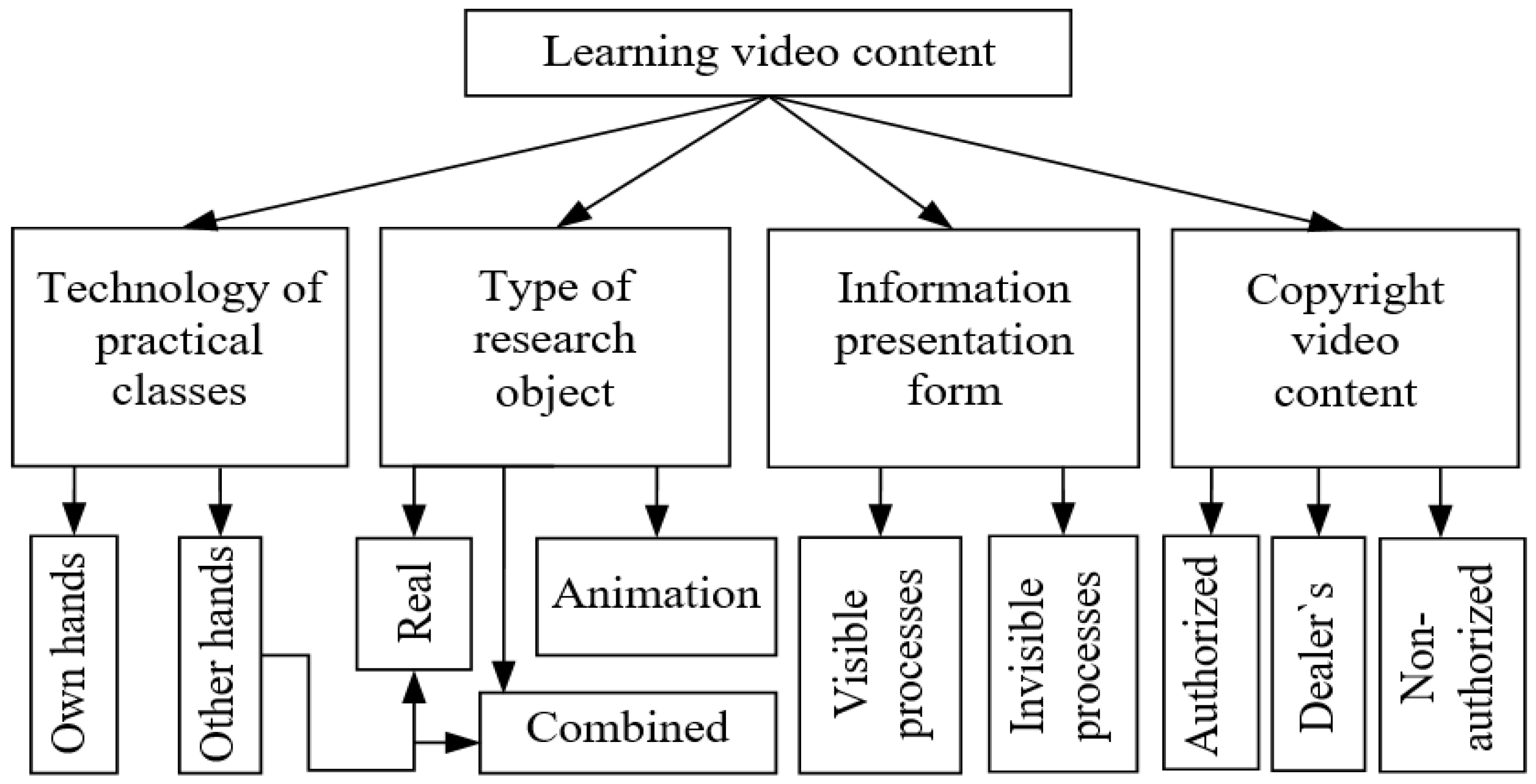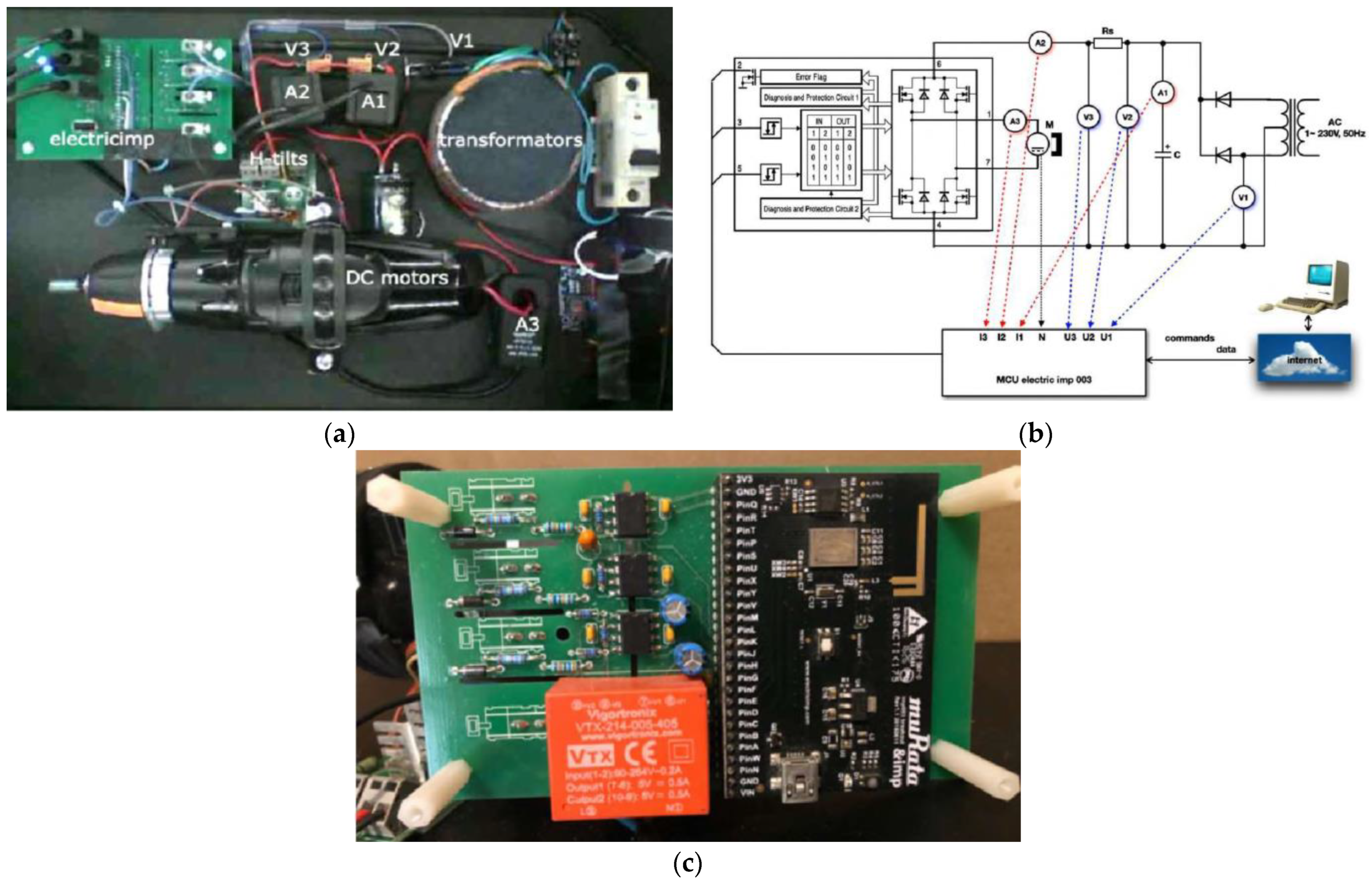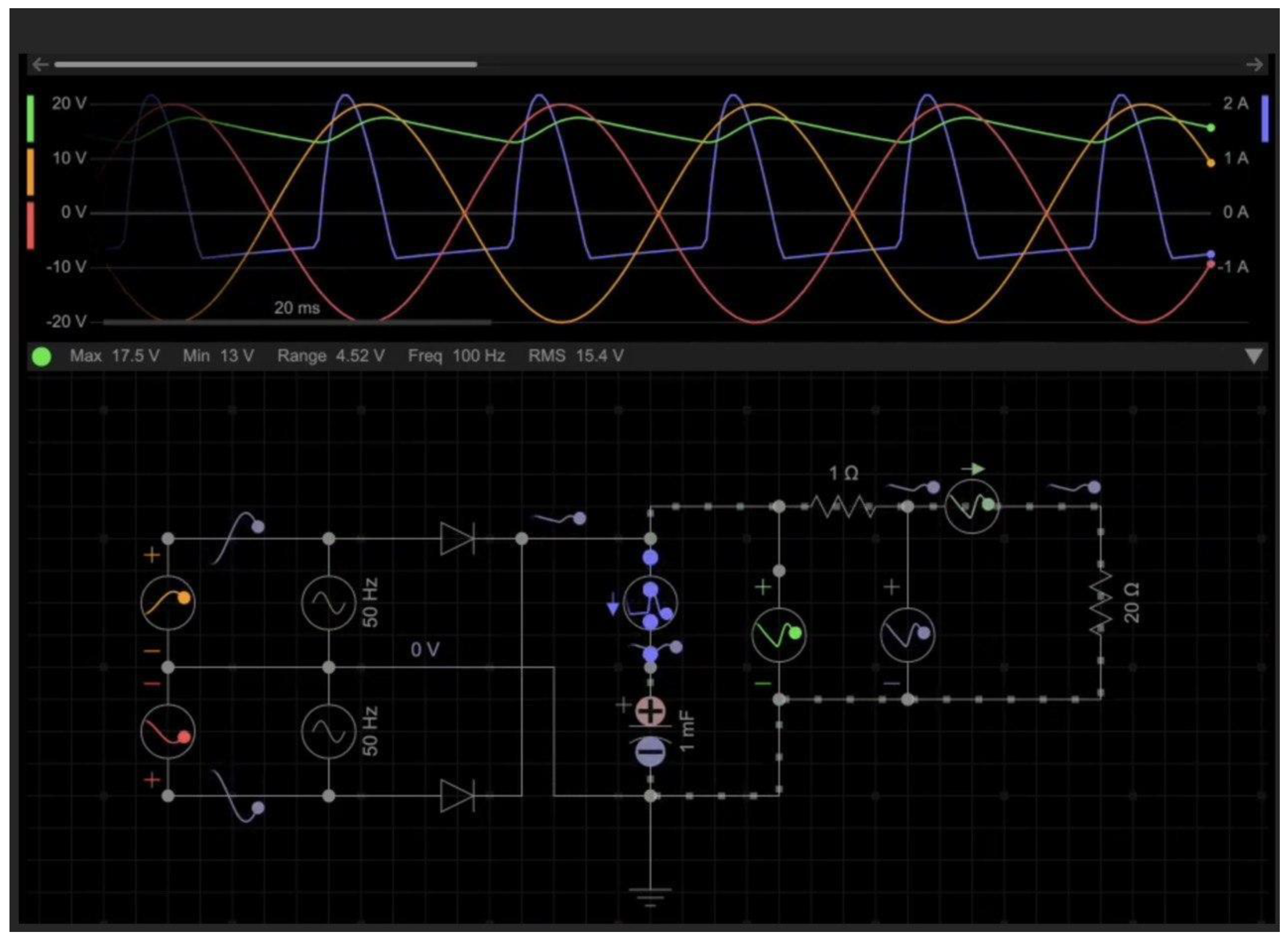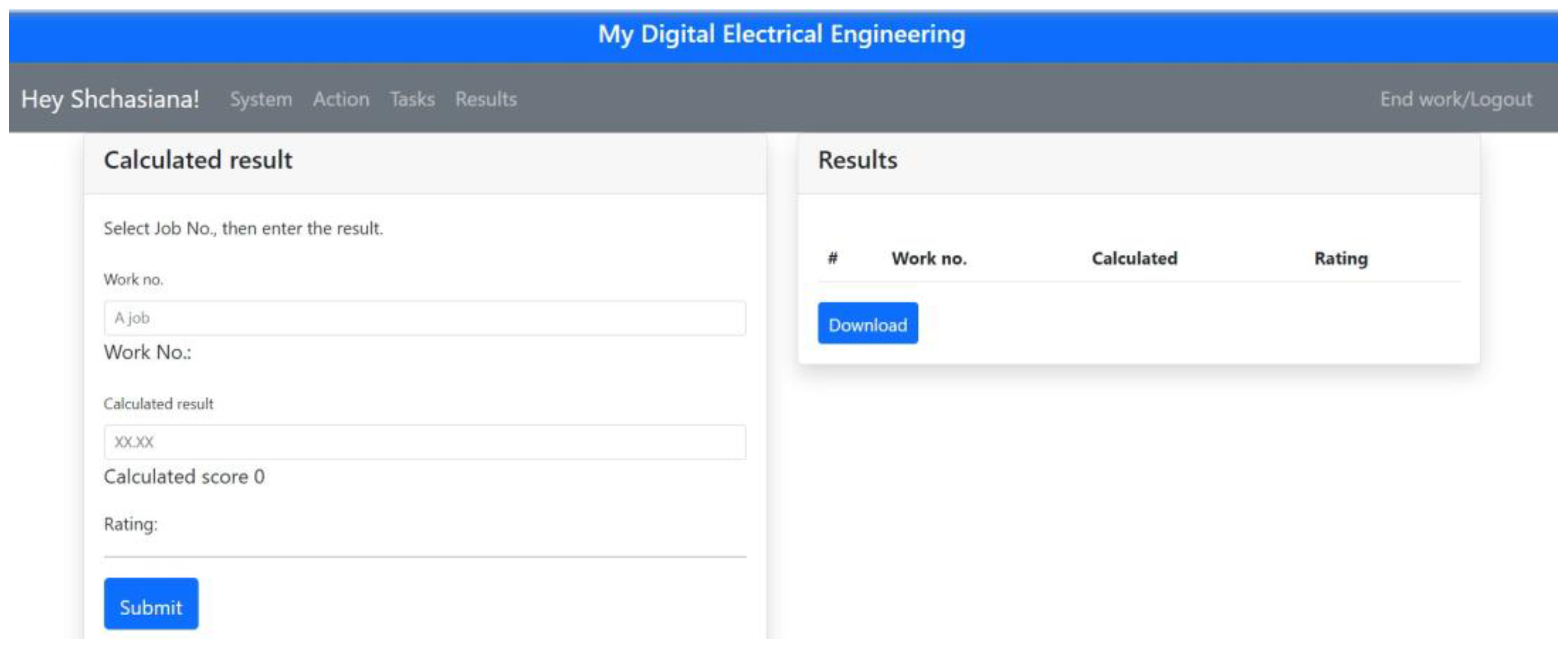1. Introduction
The ongoing armed aggression of the Russian Federation against Ukraine has threatened the life and health of all citizens of Ukraine. This significantly affected all spheres of life, including education. In many regions of Ukraine, educational institutions have suffered large-scale destruction—educational facilities along with all material and technical equipment have been damaged, and in some cases, completely destroyed. Even in cities where educational institutions remained intact, there is significant danger (threat to life) for students and education workers, so even classes in these cities have been transferred to a remote form [
1]. This refers especially to the Ukrainian territories under occupation, which have no possibility of holding classes.
In this regard, in order to create a safe educational environment for participants in the educational process in the areas where active hostilities are ongoing, in accordance with the recommendations of the Ministry of Education and Science of Ukraine, for parts of educational institutions where it is not possible to conduct face-to-face classes, training was transferred to a remote or mixed form, depending on the situation in a particular region [
2].
As the Department of Education reported on 22 February 2023: “As a result of numerous ground and air attacks, 241 buildings of educational institutions were damaged, which is 55% of the educational fund of the city of Kharkiv” [
3]. Educational institutions in the frontline and occupied regions, in particular in the city of Kharkiv, are forced to conduct all educational activities remotely.
Education of students in technical specialties is impossible without laboratory and practical work. For example, a feature of the training of specialists at the Kharkiv National Automobile and Highway University (KhNAHU) in the specialties of “Power Engineering, Electrical Engineering and Electromechanics” is the provision of conditions for the development of knowledge and skills in solving complex specialized problems, solving practical problems in the field of electric vehicles, automotive electronics, and energy-saving technologies [
4]. This involves the use of laboratory equipment.
During the COVID-19 pandemic, educational institutions around the world were faced with the need to conduct classes remotely. Currently, there are many examples of successful solutions to the problem. They use innovative approaches and technologies.
For example, the Massachusetts Institute of Technology (MIT) has developed a remote access system (RAT) that allows teachers to control a virtual classroom for computer science and electronics courses [
5]. Using the RAT in distance education enables teachers to manage the classroom directly, provide immediate support to distance-learning students, interact in real-time from the virtual classroom, obtain real-time snapshots of the virtual classroom, and monitor their exams and learning activities with high efficiency.
Another example is Stanford University. It uses virtual laboratories and simulation programs to train students in practical courses such as mechanics, physics, and engineering. For example, they created a virtual robotics lab where students can program and control virtual robots to complete their tasks [
6].
The University of Cambridge has also developed a special platform that gives students an opportunity to work virtually with sophisticated scientific instruments and equipment. In particular, a virtual laboratory was created for students of the Faculty of Mechanics, which allows for performing experiments with real tools and receiving data in real time. This approach allows students to acquire practical skills even in distance learning [
7].
An example of a remotely controlled educational system using IoT technologies is the KUKA Robot Learning Lab at the Karlsruhe Institute of Technology [
8]. The KUKA Robot Learning Lab is a remote-access robotics laboratory that allows students and researchers to access robots in the lab via the Internet from anywhere in the world and run their own projects on the robots. The implementation of IoT enables remote device control and monitoring of circuit parameters. A webcam is utilized for observation purposes.
In addition to those listed above, other virtual laboratories have been developed to support courses on the development of chemical reactions [
9] and conduct virtual experiments during student training in a general physics laboratory [
10] at the Faculty of Mechanical Engineering (a virtual fluid mechanics laboratory) [
11] and many others.
However, the general problem of using these advanced gadgets in Ukrainian universities during the war is the lack of material and technical base, the danger to the teaching and engineering staff, and the lack of software.
At Kharkiv National Automobile and Highway University (Ukraine), as well as other Ukrainian educational institutions, laboratories and practical works were also developed during the pandemic [
12]. Some of them were completely built on the use of application software packages, and some provided for the presence of the teacher in the laboratory, with students participating remotely [
13,
14,
15]. However, currently, most laboratories and servers of Ukrainian universities have been affected, or there is no access to them. Despite the military actions, the education of students is continuing in Ukraine, but due to the limited opportunities for conducting laboratory and practical classes for the students studying applied specialties, the level of providing educational services and, accordingly, the level of knowledge and skills acquired by the students is deteriorating.
Therefore, the purpose of this work is to find ways to solve the problem of training Ukrainian students in technical specialties under the circumstances of the war to ensure safety and improve the quality of educational services.
To achieve the goal, the following tasks must be solved:
Analyze the existing methods of conducting laboratory and practical work in distance learning mode;
Search for ways to borrow the existing experience of remote conducting of laboratory and practical work and possibilities of their use in the educational process of Ukrainian universities under wartime conditions;
Research the construction of a laboratory of digital remote electrical engineering education, developed by RTU, based on IoT and an algorithm for working with it;
Development of the implementation algorithm of the laboratory of digital remote electrical engineering education in the educational process of the KhNAHU.
2. Methods and Materials
For a better understanding, the methods used in this work can be presented in the form of a block diagram, as shown in
Figure 1.
Let us consider each of the elements of this block diagram in more detail.
2.1. Contextual Analysis of Educational Challenges under the War Conditions
The ongoing military conflict in Ukraine has significantly impacted the educational sector. Educational institutions have suffered from physical destruction, disruption of normal operations, and the displacement of students both within the country and abroad. These challenges have had severe implications for the quality of education, especially for technical specialties that heavily rely on practical laboratory work for effective learning outcomes. The primary objective of this study is to explore viable approaches to address the issue of teaching technical students during the war, with a focus on ensuring safety and enhancing the delivery of educational services.
2.2. Examination of Various Distance Learning Strategies
In response to the constraints imposed by the conflict, various distance learning strategies have been developed to facilitate remote education. A comprehensive analysis of these approaches reveals that one of the most promising methods is enabling Ukrainian students to pursue their studies in foreign universities that provide access to modern laboratory facilities and advanced equipment for practical training.
2.3. Integration of Digital Tools and Technologies for Remote Laboratory Work
Effective remote laboratory work necessitates the integration of cutting-edge digital tools and technologies. Among the innovative solutions available, the “My digital electrical engineering” (MDEE) laboratory, developed at Riga Technical University, stands out as a promising platform for conducting remote laboratory work in the field of electrical engineering.
2.4. In-Depth Examination of the MDEE Laboratory
This study undertakes a comprehensive analysis of the MDEE laboratory, exploring its features, capabilities, technical specifications, and interactive functionalities with students. Understanding the full potential of MDEE is crucial for leveraging its benefits in the educational process.
2.5. Step-by-Step Implementation Algorithm for MDEE at KhNAHU
A step-by-step implementation algorithm has been devised for the successful integration of the MDEE laboratory into the educational process at Kharkiv National Automobile and Road University (KhNAHU). This algorithm outlines the necessary stages for familiarizing faculty and students with the laboratory, providing appropriate training, conducting tests, and gradually incorporating the platform into the overall educational experience.
2.6. Leveraging Research Results for Enhancing Distance Learning in Technical Specialties
The findings derived from the study of the MDEE laboratory and its implementation algorithm hold immense potential for improving distance learning in technical specialties across Ukrainian universities. By adopting these approaches, the students can continue their education amidst the challenges posed by the military conflict, ensuring their safety and receiving a high-quality education.
In conclusion, this section has outlined the key methods and materials used in the study, focusing on the contextual analysis of educational challenges, exploration of various distance learning strategies, integration of digital tools for remote laboratory work, in-depth examination of the MDEE laboratory, and the development of a step-by-step implementation algorithm. By employing these methods, the research aims to address the educational issues faced during the war, contributing to the improvement of educational services for technical students in Ukraine.
3. Ways of Educating Ukrainian Students during the War
The analysis of existing methods and available possibilities for solving the problem of distance learning among the students of technical specialties showed that there are two potential solutions:
International cooperation, which includes student mobility;
Distance learning of Ukrainian students at foreign universities without moving abroad.
These methods will be considered in the following section.
3.1. Mobility of Students
This method consists of students studying full time at foreign universities during martial law.
From the efficiency point of view, this method seems very promising, especially if we take into account the international support of Ukrainian students [
16,
17,
18,
19]. However, not all students can use such help. One of the reasons is the language barrier. A study of foreign language proficiency (English, Polish, Turkish, Hungarian, Spanish, French, and German) among Ukrainians showed that “almost a third of adult residents of Ukraine—31.8%—do not speak foreign languages at all at any level.” [
20].
In addition, there is another problem. Let us consider the example of the Ukrainian university KhNAHU. A total of 1150 students study at the automotive faculty of this university, of which 1132 are male and only 18 are female. This ratio is not an exception. In Ukrainian universities, significantly more boys study technical specialties than girls. Knowledge of these statistics is important because since the beginning of martial law in Ukraine, conscripted men aged 18 to 60 have been prohibited from traveling abroad. Because of this, especially for students of technical specialties, the considered method does not cover all needs and only partially solves the problem.
3.2. Distance Learning of Ukrainian Students at Foreign Universities without Moving Abroad
This method consists of students in Ukraine studying in places that are safe for them, that is, not necessarily in the places of universities where they study. An important condition is the availability of the Internet and a computer, tablet, or mobile phone. Classes take place remotely. Students use the virtual educational base, laboratories, and software of the “host” university, with which a cooperation and information support agreement has been concluded.
Classes are held by teachers from Ukraine.
In our opinion, this method is promising and has great opportunities for its implementation.
4. Laboratory of Digital Remote Electrical Engineering Education Based on IoT for Training of Ukrainian Students
4.1. Analysis of Existing Methods of Conducting Laboratory and Practical Work in Distance Learning Mode
At the Vehicle Electronics Department at KhNAHU, which specializes in the development of energy-generating devices and produces experts in the field of “Electrical Engineering, Electronics, and Electromechanics”, there are several electrical engineering disciplines: “Electrotechnics”, “Electronics”, “Microprocessor Technology”, “Electric Machines and Apparatus”, and “Electric Drive Theory”. Mastery of these disciplines is not possible without practical and laboratory work.
Currently, some laboratories and practical works are carried out remotely using application program packages (Electronics Workbench, Multisim, Proteus, Math Lab/Simulink, and many others) and using educational video content in accordance with the classification presented in
Figure 2 [
14,
21]. When using an educational video, students act as observers, that is, the teacher shows the video, and in the process of the demonstration gives explanations and emphasizes important points [
14].
However, these means are not enough to form high-class specialists. The simulation of physical processes is not perfect. It does not take into account all the real processes that occur in electric and magnetic circuits, and observing the work of others does not replace the experience that a student should obtain during independent work.
This problem affected not only Ukrainian universities, but also European educational institutions, which were forced to hold classes remotely during the pandemic.
Some of them have quite successfully solved this problem. For example, at RTU, under the leadership of Peteris Apse-Apsitis, a remote “My digital electrical engineering” laboratory (hereinafter the laboratory) was developed, which is based on the Internet of Things (IoT) [
22].
The Internet of Things is a set of physical objects connected to the Internet and exchanging data. A typical IoT system works by collecting and sharing data in real time.
Figure 3 shows a typical IoT system architecture [
23].
4.2. “My Digital Electrical Engineering” Laboratory
The principle of operation of the laboratory is that the student, being in any part of the world, at any time, has the opportunity to perform a practical task (laboratory work), download the results, carry out a simulation of a real process, and draw graphs. This allows students to gain deeper knowledge and real practical experience.
The laboratory is open to the public, but in order to use it, you need to go through a simple registration process [
24].
The “My Digital Electrical Engineering” laboratory (
Figure 4) consists of the following:
Process study equipment that includes a PWM H-bridge driven by a DC motor fed by a capacitor-filtered full-wave rectifier;
IoT module: Twilio electricimp [
25] and module imp003 [
26] with a 32-bit microcontroller STM32F405 Cortex on board;
Control (measurement) module: 3-phase power measurement module of RTU’s own development, and Hall current sensor with a split core;
Secure HTTPS web portal: Apache web server and MySQL database, and web pages based on scripting languages HTML5, Javascript, and PHP;
Webcams based on a web server.
4.3. Algorithm for Performing Laboratory Work in “My Digital Electrical Engineering”
The Internet browsers Google Chrome or Mozilla Firefox is used to work with the system. Chrome allows you to display pages in English, Ukrainian, or any language version.
The desktop consists of several pages: description, tasks, and results.
In the Darbība (action) tab, there is a video recording of instructions (main steps) regarding the order of actions, obtaining results, and graphs.
To perform laboratory work, it is necessary to open the Uzdevumi (task) attachment. In the pop-up menu Izvēlēties darbu (choose a job), zero is a demonstration job, during the execution of which you can choose any measuring devices (ammeters A1–A3 and voltmeters V1–V3). By pressing the buttons MĒRĪT (measure) and Simulācija (simulation) in a pop-up window, you can see the processes occurring in the electrical circuit, and by pressing the buttons Atjaunināt (update) and Lejuplādēt (download), you can obtain graphs and measurement results.
To directly perform laboratory work, a student must perform the following steps:
In the Uzdevumi (tasks) tab, select the task corresponding to the number of the laboratory work and read a brief description.
Select the necessary measuring instruments (V1…V3, A1…A3) according to the current task and the measuring range (e.g., DC 10 V, etc.). If the instruments and/or measuring range are not selected correctly, the results will be incorrect, or “0” will be displayed.
Press the MĒRĪT (measure) button to initialize the DC motor on the remote device and observe the rotation of the motor rotor in the window.
Press the Simulacija (simulation) button to observe the processes occurring in the electrical circuit, as shown in
Figure 5.
Press the Atjaunināt (update) button to obtain graphs of currents and voltages versus time.
Press the Lejuplādēt (download) button to receive the measurement results.
Go to the Rezultāti (results) menu and enter the results for further verification by the teacher (
Figure 6).
While the student works, the web page sends commands directly to the plant control system to start the system and take the necessary measurements. In response, the device outputs the measured values and the correct value calculated on the measuring device, which is not available to students. This makes it easy to compare the result calculated by the student with the actual result. If the difference is less than 1.5%, this indicates high accuracy of the measurements. The results of completing the assigned tasks according to the variants are available to the instructor. These data are clearly defined and verified.
5. The Algorithm of Implementation of the Laboratory in the Educational Process of the KhNAHU
For many years, Riga Technical University (Latvia) and Kharkiv National Automobile and Highway University (Ukraine) have been conducting fruitful cooperation in both scientific and educational areas. Building upon this strong foundation of cooperation, Kharkiv National Automobile and Highway University (KhNAHU) expresses a keen interest in integrating the “My Digital Electrical Engineering” laboratory from Riga Technical University (RTU) into its educational process. To achieve this goal, several essential steps need to be undertaken:
Agreement between universities: the first crucial step involves formalizing an agreement between KhNAHU and RTU, establishing the terms and conditions of using the “My Digital Electrical Engineering” laboratory in the educational process at KhNAHU;
Integration into educational programs: KhNAHU will be responsible for incorporating the relevant laboratory work into its educational programs and syllabuses of disciplines. This ensures that the laboratory’s content aligns seamlessly with the curriculum and learning objectives;
Translation of programs: to facilitate a smooth integration, KhNAHU will undertake the translation of laboratory programs from their current language (Latvian) into Ukrainian and English. This will enable students and educators to access the materials in languages familiar to them;
Teacher rights: RTU will be required to grant teacher (administrator) rights in the virtual laboratory to KhNAHU instructors. This will empower KhNAHU teachers to effectively manage and oversee laboratory activities within the virtual environment;
Consultations and support: discussions will be held between KhNAHU and RTU to explore the possibility of providing consultations and support for KhNAHU teachers from specialists of the “My Digital Electrical Engineering” laboratory. Such interactions will prove invaluable in fostering effective utilization of the laboratory’s capabilities and enhancing the learning experience for KhNAHU students;
Methodical guidelines: KhNAHU will undertake the development of comprehensive methodical guidelines in Ukrainian and English, complementing the laboratory exercises. These guidelines will serve as a reference for both students and educators, ensuring a structured and effective approach to conducting laboratory work.
By successfully navigating these steps, KhNAHU can significantly enhance its educational process, offering students access to cutting-edge technologies and hands-on practical training through the “My Digital Electrical Engineering” laboratory. This collaboration between KhNAHU and RTU exemplifies the importance of international partnerships in advancing education and fostering innovation, even amidst challenging circumstances caused by the ongoing conflict. The integration of remote digital laboratories based on IoT technologies presents a forward-looking solution to overcome barriers in education, ensuring the continuity of learning and the development of skilled professionals in the fields of electrical engineering and power engineering. As educational institutions adapt and evolve to address the needs of modern times, such collaborative efforts stand as a testament to the resilience and commitment to providing quality education for students, regardless of external challenges.
6. Discussion
The current global context underscores the critical role of energy in driving industrial development and societal progress. The continuous growth in production rates of electrical energy and electrical engineering products highlights the significance of preparing well-trained professionals in the fields of electrical engineering and power engineering.
One of the fundamental pillars of higher education in these disciplines is practical training, which enables students to gain hands-on experience and develop essential skills. However, the educational sector in Ukraine faces a substantial challenge in ensuring the delivery of high-quality practical training. Innovative technologies and advanced teaching tools are necessary to bridge the gap, particularly in the face of a wartime situation. The establishment and improvement of remote digital laboratories based on IoT offer a promising solution to this challenge.
Students, having minimal technical means and an Internet connection, using the provided method, can complete the task from anywhere in the world. This method allows students to learn effectively, safely, and with high quality, and teachers to teach and test knowledge. This approach significantly simplifies the learning process and increases its effectiveness. It is important to note that the implementation of the method is based primarily on the experience of students and teachers in this software environment. When improving the method, it is important to take into account all the feedback. Therefore, it is recommended to periodically conduct a survey of students and teachers.
It is crucial to acknowledge a specific issue that must be addressed to ensure the successful utilization of the laboratory. The limitation of having only one installation can cause delays for students in starting their laboratory work, as observed in the case of motor rotations. To overcome this problem, the implementation process must include measures to increase the number of stands in the laboratory.
7. Conclusions
The military aggression of the Russian Federation against Ukraine became a challenge to the very existence of the state, its sovereignty, and collegiality, and also severely affected all components of education.
There was a significant threat to the life and health of the participants of the educational process; large-scale destruction of the educational infrastructure took place, which caused the forced large-scale movement of participants in the educational process within Ukraine and abroad, and led to the deterioration of the provision of educational services and the acquisition of knowledge by those seeking education. This especially applies to practical specialties.
Education of students in technical specialties is impossible without laboratory and practical work involving the use of equipment. During the pandemic, laboratory and practical work were developed, both those that were completely built on the use of application software packages, and those that provided for the presence of the teacher in the laboratory, with the students participating remotely. However, for now, most of the universities’ labs and servers are affected or inaccessible.
The purpose of this work was to find ways to solve the problem of training Ukrainian students in technical specialties during the war to ensure safety and improve the quality of educational services.
The existing methods of conducting laboratory and practical work in the distance learning mode are analyzed. The analysis showed that distance learning for Ukrainian students in foreign universities without moving abroad is the most promising.
The search for ways to borrow the existing experience of remote performance of laboratory work and the possibilities of their use in the educational process of Ukrainian universities under the conditions of war was conducted. It was determined that for their implementation, it is advisable to use the laboratory of digital remote electrical engineering education “My digital electrical engineering”, developed by Riga Technical University. The construction of this laboratory and the algorithm for working with it were studied.
A step-by-step algorithm for implementing the laboratory of digital remote electrical engineering education into the educational process of the KhNAHU has been developed.
The results of this work can be used to improve the distance learning process in technical universities of Ukraine.













